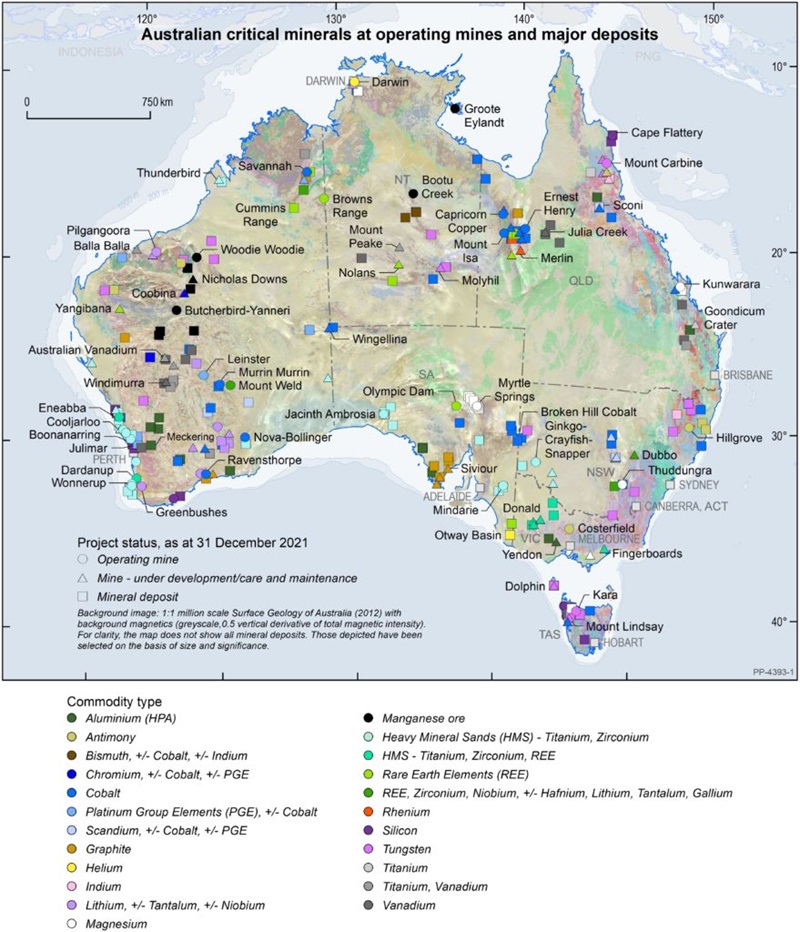Key points
- Critical minerals are essential for modern but their supply chains are vulnerable to disruptions from events like conflicts, natural disasters and geopolitical tensions.
- Australia has designated 31 critical minerals that are vital for clean energy, aerospace and defence.
- Each country's critical minerals list differs based on local industry needs and supply threats, highlighting the importance of secure and reliable supply chains.
What makes a mineral critical? Put simply, critical minerals help create the essential everyday items we all use. But these minerals may not be easy to get.
One of the reasons various minerals are becoming 'critical' is the growing demand for technologies we rely on in modern-day life. Things like electric vehicle batteries and solar cells . Fibre-optic cables and semiconductor chips. Even banknotes , stainless steel, and electronic appliances.
We are now using more minerals and in greater volumes. And this demand will increase even more over the next decades.
While demand is one part of what defines a critical mineral, the other is supply. Some minerals are abundant while still having reliable supply issues. Things like conflict and war, natural disasters, and geopolitical tensions affect supply chains.
The first critical minerals list
The United States (US) drew up the very first list of critical minerals due to the first World War.
During the war, tin, nickel, platinum, nitrates and potash were scarce on US soil. These minerals were important in military equipment and machinery manufacture, as well as fertilisers for agriculture and keeping the troops and those at home fed.
Within two years of the conflict beginning, these minerals were becoming difficult to obtain.
By 1917, the US Geological Survey had shifted its focus to prioritise the search for minerals needed for the war effort. From an initial list of five, the US critical minerals list in 2022 has grown to encompass 50 elements.
And here is an interesting point. Each country differs on which minerals or materials they consider critical. This difference is due to local uses in manufacturing and industry. Another consideration is the threats each country faces in ensuring its supply of these resources.
Australia's critical minerals list
In Australia, a critical mineral is a metallic or non-metallic element with two characteristics. Firstly, it is essential for our modern technologies, economies or national security. Secondly, there is a risk its supply chains could be disrupted.
Australia has designated 31 critical minerals , one of these is the group of elements known as rare earths, the other is the group of six elements in the platinum group. Some of the elements include lithium, cobalt, vanadium, titanium, graphite, tungsten and rare earths.
These key ingredients are essential for Australia to build clean energy infrastructure and technologies for aerospace and defence.
We have an abundance of many of these for export, and we're not the only country that wants them. The demand our allies have for our mineral exports heavily influences our critical minerals list.
Australia is regarded as a nation that can offer a reliable supply of critical minerals. In 2021, our Critical Energy Minerals Roadmap outlined how Australia could become a global superpower in the supply of critical minerals.

Computer chips and solar panels
One recent addition to Australia's critical minerals list is silicon.
Our green minerals technology research is led by Dr Chris Vernon . Dr Vernon explains how a product such as silicon can be classified as critical despite its abundance from silica sands.
"While silica (quartz and sand) is plentiful in Australia, it is the importance of the refined material that put it on the list. Silicon has been added because of recent global computer-chip shortages, and a rapid growth in the industry," Dr Vernon says.
Japan, South Korea, Taiwan, the US, and Europe are leading producers of computer chips. But they rely ultimately on a base material supplied by a handful of individual manufacturers in China.
"With the COVID pandemic, factories in China closed down. And they stopped producing as much of the silicon used to manufacture high-purity silicon wafers needed for semiconductors," Dr Vernon says.
"The supply chain issues caused by COVID alerted us to the problems inherent in relying on just one dominant supplier."
And microchips aren't the only technology requiring high-purity silicon. Rooftop solar panels also use this silicon, and that demand is growing even more rapidly.
"While the world is not running out of silica (as sand and quartz), it is running out of processed silicon and, therefore, high-purity silicon. This is because it's not produced in enough places to keep the supply chain open and viable," Dr Vernon says.
Most of our modern tech devices rely on computer chips. Many Australian households have rooftop solar. With silicon being the common ingredient between the two it becomes easy to see the criticality of this material.
Growing interest in gallium

Gallium is another critical mineral gaining attention. Gallium plays a vital role in modern technology. It's a key component in LED lighting, mobile phone chips (especially 4G/5G) and small, high-power transformers.
Despite being as abundant as copper, it never occurs in concentrations high enough to be mined directly. Instead, gallium is typically found alongside other elements.
"You would never get a gallium mine because it co-occurs with other things like aluminium and zinc," explains Dr Vernon.
Its most viable source is bauxite, the primary ore for alumina. Gallium exists in small quantities within bauxite and is almost exclusively recovered as a by-product of alumina refining.
"If you're processing a million tonnes of bauxite, gallium can be recovered in meaningful amounts, which is something alumina refineries are starting to explore," says Dr Vernon.
Although global demand is relatively low at around 708 tonnes annually, its value is high due to its niche applications and limited supply. Even small recoveries are becoming economically significant.
Rare earths are not so rare, just hard to access
Rare earth elements (REEs) are another group of critical minerals creating headlines. Despite their name, REEs are not actually scarce in the Earth's crust. The challenge lies in their processing and refinement, which is largely concentrated in China.
"Rare earths are not particularly rare but are rarely processed outside of China so there is a supply chain bottleneck that makes them rare," Dr Vernon says.
REEs consist of 16 metallic elements. While they are relatively plentiful, they are often dispersed and not found in concentrations that make mining straightforward. This limits their accessibility and contributes to their classification as critical minerals.
"When we talk about critical minerals, we mean those that are hard to access, either because of cost or supply issues," says Dr Vernon.
What all REE have in common and what makes them so important as the world undergoes a rapid energy transition is their strong optical or magnetic properties. For example, they are vital to create the strong magnets used in the motors that drive wind turbines and electric vehicles.
As the world races towards a future powered by clean energy and driven by technological innovation, the spotlight is shining on critical minerals and strategic partnerships with Australia's allies working to open reliable supply chains to keep pace with demand.
This article has been updated on 23 October 2025 and was originally published in 2022.






